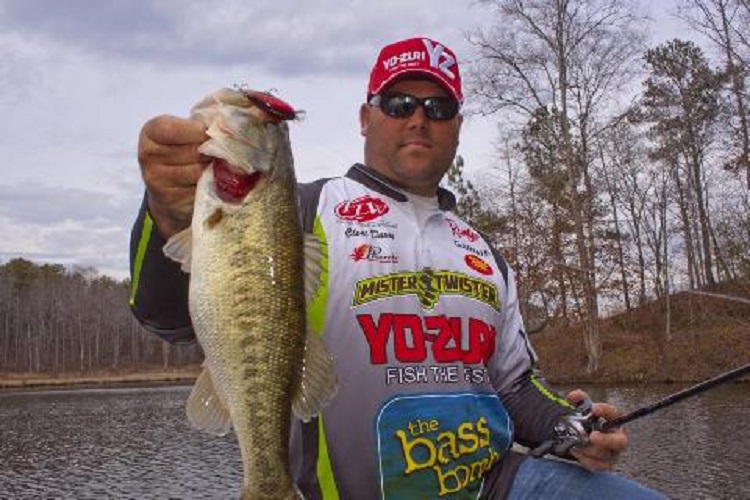



Cold water cranking is a time-honored tradition among bass fishermen. The crankbait is an effective tool during the colder months of the year and catches both quality and quantity of all of the major bass species. FLW Tour pro Clent Davis focuses his efforts on cranking medium-range diving crankbaits as well as shad profile crankbaits throughout the winter and spring months.
When and Where
There are many times when a crankbait will excel in cold
water and
When it comes to water temperature, there is not a magic
number that tells
Bait Choices
Shad profile crankbaits have long been a staple for anglers
fishing colder water, but the crankbaits are lightweight and often require
specific tackle to use them to their potential. “I like to use the Yo-Zuri 3DB shad because it’s a good size and the best
thing about it is it casts a long ways because it weighs 3/8oz instead of 1/4oz. I can use it on baitcasting gear where many
of the others you have to use a spinning rod to get a good cast,” says
Besides the shad profile crankbait,
Color Selection
With so many colors on the market, it can be hard to decide which one to throw and where. Clent Davis is a believer in simplifying his color selection and mainly uses two colors for clear water and two for dirtier water. “If it’s clear, the Prism Ayu and Prism Sexy Shad are the two I use and if it is dirty water I will be throwing Metallic Blue Gill or the Crawfish pattern. The Yo-Zuri baits have a lot of flash in them and these colors work good in both sunny and cloudy conditions”
In addition to having the right color for the right water
clarity,
Rod, Reel and Line
There is one exception for
Retrieve Speeds and
Boat Positioning
The great thing about fishing a crankbait is they can catch fish with a simple cast and retrieve, but experience will show you there are ways to improve your odds. Beyond just the retrieve speed and pausing the bait, Clent Davis likes to do several things to get the most out of his crankbaits. “Right away I crank it down fast four or five times to get it dive deep as it is going to go and then from there I will start a slow retrieve and will go slower the colder the water is. Another thing I do is stop it every few cranks and then always start with a quick jerk, almost like a ripbait, it really helps to get these baits to flash and also keeps them down deep,” shares Davis.
Another key part of cranking is boat positioning. “The
biggest mistake I see people doing, especially when they haven’t figured out
what depth the fish are is to fish parallel down the bank at just one depth. That’s
a great way to catch them when you know exactly where they are but if not you
are missing the fish for the whole cast,” says
Late winter and early spring cranking is an excellent way to load the boat with crankbait fish. The good thing about this year is that the bass are often grouped up and a crankbait is one of the best ways to catch multiple fish in an area in a short amount of time. By following the simple cold water approach of Clent Davis, you can ensure that you have a reliable winter and prespawn pattern.


 Advertising
Advertising